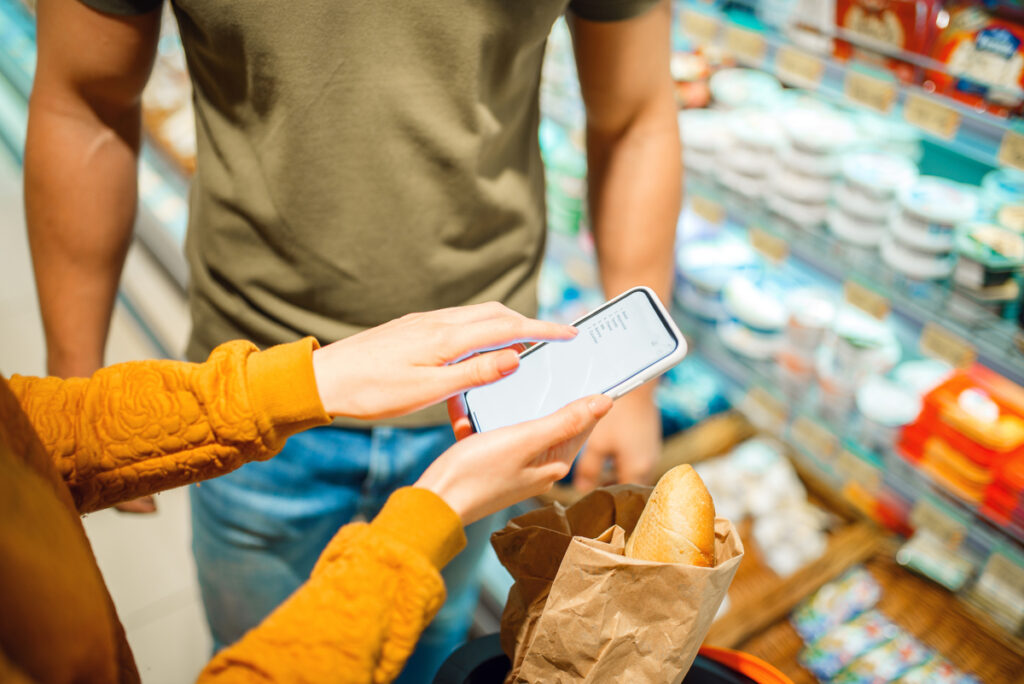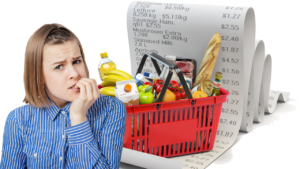“Cost is the new king for consumer products and retail organizations,” declares Tim Bridges, an Executive Vice President at Capgemini.[1] And nowhere is that truer than in the grocery sector. Markets correspondent Emily Peck explains, “Every time Americans go food shopping they feel the sting of higher prices, making the grocery store the place where consumers are most regularly reminded about inflation.”[2] In Part One of this article, I discussed how high food prices could affect national elections. In Part Two, I discussed how consumer behavior is changing as a result of high food prices. In this concluding discussion, I want to explore what brands and grocers are doing to win back customer loyalty and trust. It begins with lowering prices. Unfortunately, that’s not as easy as it sounds. Journalist Patrick Thomas explains, “Keeping prices down has become harder across the grocery sector as costs for labor, transportation and commodities have risen.”[3] According to journalist Whizy Kim, there is some good news. She writes, “Grocery retailers would like to make an announcement: They’re listening to customers and lowering their prices.”[4]
Brands and Grocers Try to Win Back Consumer Loyalty
What Brands Can Do
Obviously, any price relief is welcome news for consumers. Consumers, however, are wary because the first attempts by brands to keep prices from rising involved a tactic known as “shrinkflation.” The Merriam-Webster Dictionary notes, “Shrinkflation is the practice of reducing a product’s amount or volume per unit while continuing to offer it at the same price.” Consumers aren’t dumb and notice such tactics. Their response is often to look for another to buy or another store in which to shop. In response to high food prices, a survey by Kantar found, “Local and regional brands represented 47% of purchases, while private label sales increased by 0.5 percentage points to reach 22.7%. Discount retailers achieved 10.5% value growth year on year on a global basis to represent 16% of all grocery spend, compared to 9.6% in 2021. Globally, 61% of households are extremely or very concerned with rising grocery costs. As a result, while 64% of global brands are growing in value terms, only half of FMCG brands are growing in terms of consumer choices — how many times they are chosen off the shelf by consumers.”[5]
Journalists Stephanie Stamm and Jesse Newman report private labels and store brands are making big inroads. They write, “Goodbye, Chips Ahoy cookies and French’s mustard. Hello … Great Value, Private Selection and Signature Select. U.S. consumers are trying many tactics to cut their food spending: eating out less, buying less groceries and ditching name brands. That is boosting lower-cost store brands, which last year claimed 22 cents out of every dollar spent in grocery stores — the largest share ever for so-called private-label products.”[6] They go on to note, “National brands are still king in the U.S., making up 78% of overall food and beverage dollar sales, according to data from the market-research firm Circana. But store brands … are gaining ground, raising pressure on big food companies that have pushed their prices higher.” It’s not all bad news for name brands. Guillaume Bacuvier, CEO of the Worldpanel Division at Kantar, said: “The Brand Footprint 2024 rankings reveal how successful brands have recruited more shoppers in an environment where less costs more and private labels are gaining share. Put simply, they have found ways to be meaningfully different. It’s what happens when brands create strong functional and emotive connections, making the brand mentally available and physically unavoidable, integrating seamlessly across all consumer touchpoints. The brands featured in the report are to be commended for achieving this while pressure on household expenses persists as a stubborn undercurrent in the global economy.”[7]
Newman and Stamm report, “More than half of retailers expect private-label goods to be their top driver of growth this year, according to a survey by NielsenIQ [NIQ]. Grocers that primarily offer store brands, such as Trader Joe’s and Aldi, are seeing more foot traffic in recent months. Private label’s incursion is cutting into national brands’ sales across a variety of supermarket categories. Pasta, pet food and condiments are among the food categories seeing big moves from national brands to store versions, according to NIQ data.” Despite the gains being made by private labels, don’t write the eulogy for name brands just yet. As Bacuvier noted, many name brands have an emotional connection with customers. The staff at Simporter notes, “Brand loyalty isn’t built overnight. For many consumers, well-known brands offer a sense of comfort and reliability that has been honed through years or even generations. The emotional connection to a brand often transcends price considerations, making consumers more likely to stick with what they know and love.”[8] Other actions brands can undertake to maintain market share include:
• Innovation and features. The Simporter staff notes, “Established brands often have a leg up in terms of innovation and specialized features, backed by years of R&D investments.” Journalist Erik Chelstad, an Engineering Leader at T-Mobile, adds, “Private labels take little risk with their products, as they typically choose not to market their items and need to maintain consistency. New innovative items can draw attention to name brands and create the potential to convert a future loyal customer.”[9]
• Packaging. According to the Simporter staff, “Brands typically invest more in packaging design as part of their overall branding strategy. The aesthetic appeal can make a significant difference in grabbing consumer attention.” John Quelch, Executive Vice Chancellor at Duke Kunshan University, and David Harding, an advisory partner at Bain & Company, add, “It is useful to consider value-added packaging changes — and, in some circumstances, line extensions — that make the product stand out on the shelf, keep consumers’ attention focused on the national brands, and raise the costs for private-label imitators.”[10]
• Trade Promotion Optimization. Quelch and Harding note, “National-brand manufacturers cannot prevent retailers from displaying copycat private-label products alongside their brands with ‘compare and save’ signs heralding the price gaps. However, they can use sales promotion tactics to enhance the merchandising of their brands.” Trade promotion optimization helps brands and grocers work together to gain consumer loyalty.
What Grocers Can Do
The current effort to win back consumer loyalty involves lowering prices. Why now? Danielle Commisso, Content Marketing at CivicScience, observes, “Attitudes change before behaviors do.”[11] And consumer attitudes have been changing rapidly the past couple of years. Jerry Sheldon, Vice President of Technology at IHL Group, notes, “Retailers respond when consumer sentiment seems to hit a tipping point.”[12] And that tipping point has finally been reached. As a result, consumer behavior has changed dramatically forcing brands and retailers to act. As I noted in Part Two of this article, one thing grocers can do is beef up their loyalty programs. Consumers equate “loyalty programs” with “discounts.” Retailers are also beginning to lower prices. Journalist Francisco Velasquez reports, “Amazon, Walmart, Target, and others are all duking it out with discount deals — and with each markdown, they hope their bargain will be the one to win over inflation-weary consumers. While some retailers say they’re cutting prices to give shoppers deals, the efforts clearly align with the companies’ needs to offset declining sales as inflation remains elevated.”[13] Kim adds, “More than anything, declarations about cutting prices arouse a whole lot of media buzz that budget-conscious customers will pay attention to. It’s a savvy play for shifting perceptions of value, crucial for consumers in the decision-making process of where to shop for bread and eggs. Customers benefit by saving some money; retailers possibly benefit even more by being known as the company that magnanimously trimmed prices.”
Kim asks, “How long will these price cuts last? Are they permanent?” Only time will tell. Some reduced-price items are clearly on sale for a limited time. Other price cuts could be permanent. Nevertheless, it’s a good time for consumers to go bargain hunting. If consumer behavior changes permanently, brand names could struggle. Thomas seems to think that Aldi may represent the future of the grocery sector. He reports, “Foot traffic at Aldi stores in March was up about 26% compared with the prior year and higher than the 6% increase at rival Kroger stores and the 15% uptick at Trader Joe’s, according to mobile-device location data from analytics company Placer.ai. On a basket of 50 typical household items, Aldi’s prices were about 6% cheaper than Walmart’s through the first three months of the year, according to retailing research and consulting firm Customer Growth Partners. Fresh and frozen items were nearly 16% cheaper.” How does Aldi keep its prices low? Thomas explains, “The company’s stores typically carry about 2,000 separate items, compared with an average of more than 31,000 at major supermarket operators. … [And] about 90% of Aldi’s products are private label. … By cutting out some national brands, Aldi can make and sell its own products and charge less for them.”
Analysts from Boston Consulting Group (BCG) point out that different types of retailers (e.g., club stores, discount stores, big box stores, and grocery stores) require different strategies to attract and maintain customers. They write, “In a highly competitive landscape, grocery retailers must explicitly choose what they stand for if they are to stand out. Specifically, we recommend that they define an optimal customer value proposition.”[14] They also suggest taking the following actions:
• Club Stores. “Club stores should concentrate on their strengths, remaining cost-focused while continuing to improve their fresh product offerings. In addition, they can leverage consumer insights to increase their appeal to younger generations of shoppers looking for meal solutions and quality.”
• Discount Stores. “Discount players should continue to deliver on price and ease of shopping, while building a product assortment that can win a greater share of the consumer basket.”
• Big Box Stores. “Mass players should stay laser-focused on pricing and special deals while continuing to advance their omnichannel digital capabilities and ‘one-stop shop’ offering.”
• National Grocery Chains. “National grocery stores, defending their market share against more price-competitive channels, should focus on their ability to deliver convenience. They can do so through their growing store footprints and their resultant ability to scale investments in market-leading digital capabilities, elevating their omnichannel presence.”
• Regional Grocery Stores. “Regional stores can keep focusing on their strong customer value proposition around healthy, quality products and meal solutions. They should also continue boosting customer loyalty through rewards programs as well as local involvement, such as partnerships with local charities.”
Concluding Thoughts
With take-home food prices over 20% higher than they were four years ago, consumers will continue to bargain hunt. Brands and retailers must adapt to this new reality. As noted above, many grocers are turning to private labels, store brands, and loyalty programs. As long as product price is the major influencing factor in consumer purchases, brands and grocers that convince shoppers they offer the best value for the money will be winners in the retail game. When consumers feel they are getting ripped off, they respond immediately and, in today’s social media environment, they get the word out fast. Damage to brand reputation can be difficult to overcome. Concentrating on providing consumers with value and good service is a winning formula in both good times and bad.
Footnotes
[1] Tim Bridges, “Cost Is The New King For Consumer Products And Retail Organizations,” Forbes, 8 May 2024.
[2] Emily Peck, “Why grocery bills feel so high, even though food inflation is technically low,” Axios, 28 May 2024.
[3] Patrick Thomas, “Rising Food Prices Send More Shoppers to Aldi,” The Wall Street Journal, 29 April 2024.
[4] Whizy Kim, “What’s really happening to grocery prices right now,” Vox, 29 May 2024.
[5] Staff, “Global Grocery bill exceeds $1,000 per household for the first time,” Kantar, 29 May 2024.
[6] Jesse Newman and Stephanie Stamm, “Store Brands Are Filling Up More of Your Shopping Cart,” The Wall Street Journal, 29 May 2024.
[7] Kantar Staff, op. cit.
[8] Staff, “Winning the Shelf Wars: Brands vs. Private Labels,” Simporter, 12 September 2023.
[9] Erik Chelstad, “How National Brands Can Compete with Private Labels,” Observa, 22 March 2018.
[10] John Quelch and David Harding, “Brands Versus Private Labels: Fighting to Win,” Harvard Business Review, January-February 1996.
[11] Danielle Commisso, “As Shrinkflation Becomes More Prevalent, Consumers Grow Less Brand Loyal,” CivicScience, 13 March 2024.
[12] Francisco Velasquez, “Big Retail’s hot summer thing: price cuts,” Quartz, 30 May 2024.
[13] Ibid.
[14] Jill Wang, Aileen Lee, Stephanie Halgren, Travis Jackson, and Aftab Hussain, “US Grocers, Play to Your Strengths,” Boston Consulting Group, 3 June 2024.





